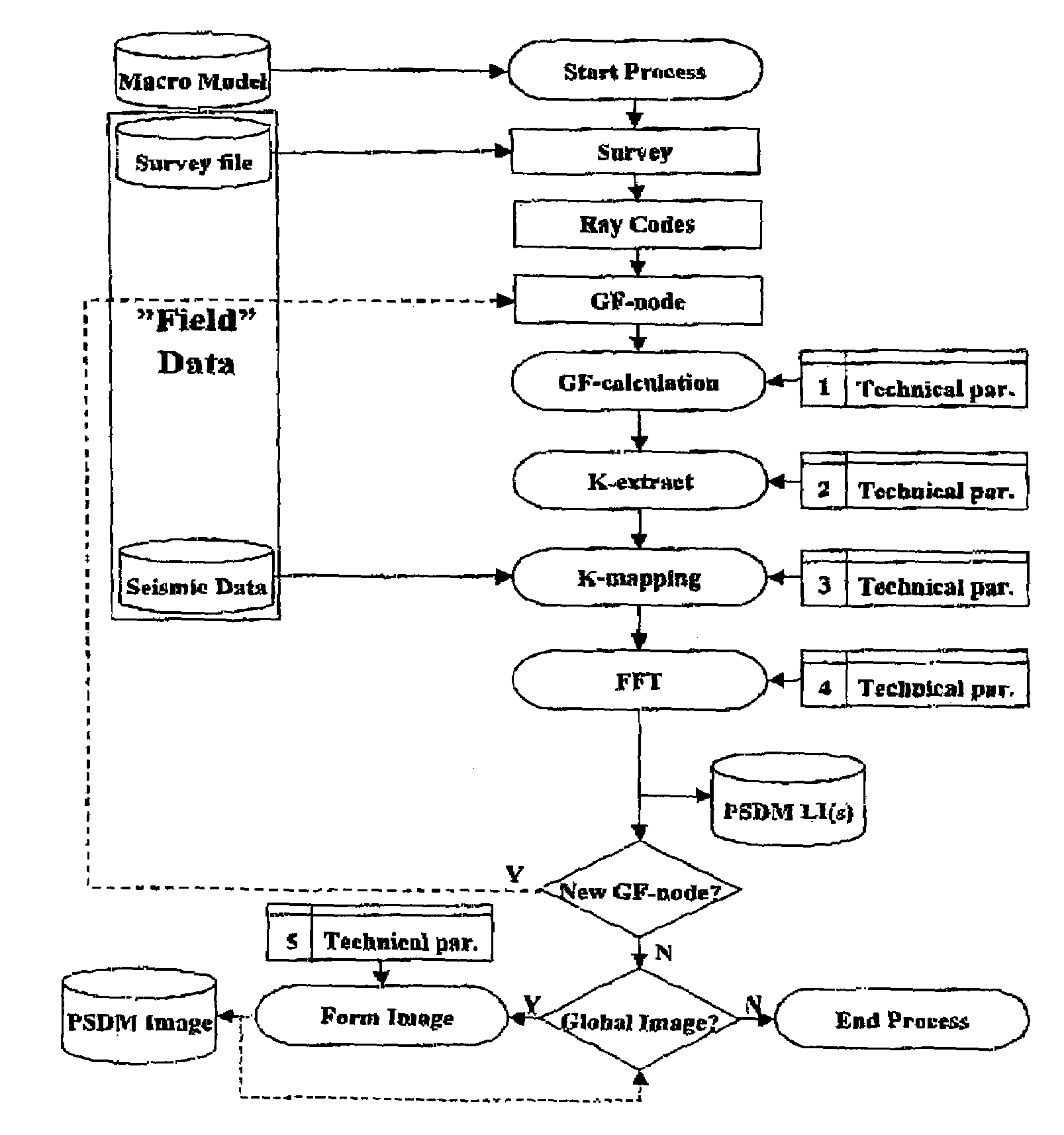Method for simulating local prestack depth migrated seismic images
a seismic image and local prestack technology, applied in seismology, geological measurements, instruments, etc., can solve the problems of limited ability to distinguish small-scale structures, not all reflectors are properly illuminated, and the elastic wave generated by artificial sources is not stabl
- Summary
- Abstract
- Description
- Claims
- Application Information
AI Technical Summary
Benefits of technology
Problems solved by technology
Method used
Image
Examples
Embodiment Construction
[0042]To properly and completely introduce the present invention, a review of the local imaging technique, as introduced in ([9], [10], [11], [12], [13]) and not yet well known in the seismic community, is necessary to acquire a good understanding of the data-based imaging approach, which will then help understanding the present invention.
[0043]PreStack Depth Migration (PSDM) should be the ultimate stage of a seismic processing sequence, although post- / pre-stack time migration might be sufficient for the interpreters. The goal is to obtain good-quality depth images of the reflecting / diffracting structures, as perceived by the elastic waves generated in a seismic acquisition. A powerful approach in both seismic modeling and processing is to consider the reflecting structures in the earth as sets of point scatterers radiating back the incident energy (see the concept of exploding reflector for instance, [1]). The scattered energy is recorded and PSDM is the tool used to focus this ene...
PUM
 Login to View More
Login to View More Abstract
Description
Claims
Application Information
 Login to View More
Login to View More - R&D
- Intellectual Property
- Life Sciences
- Materials
- Tech Scout
- Unparalleled Data Quality
- Higher Quality Content
- 60% Fewer Hallucinations
Browse by: Latest US Patents, China's latest patents, Technical Efficacy Thesaurus, Application Domain, Technology Topic, Popular Technical Reports.
© 2025 PatSnap. All rights reserved.Legal|Privacy policy|Modern Slavery Act Transparency Statement|Sitemap|About US| Contact US: help@patsnap.com



